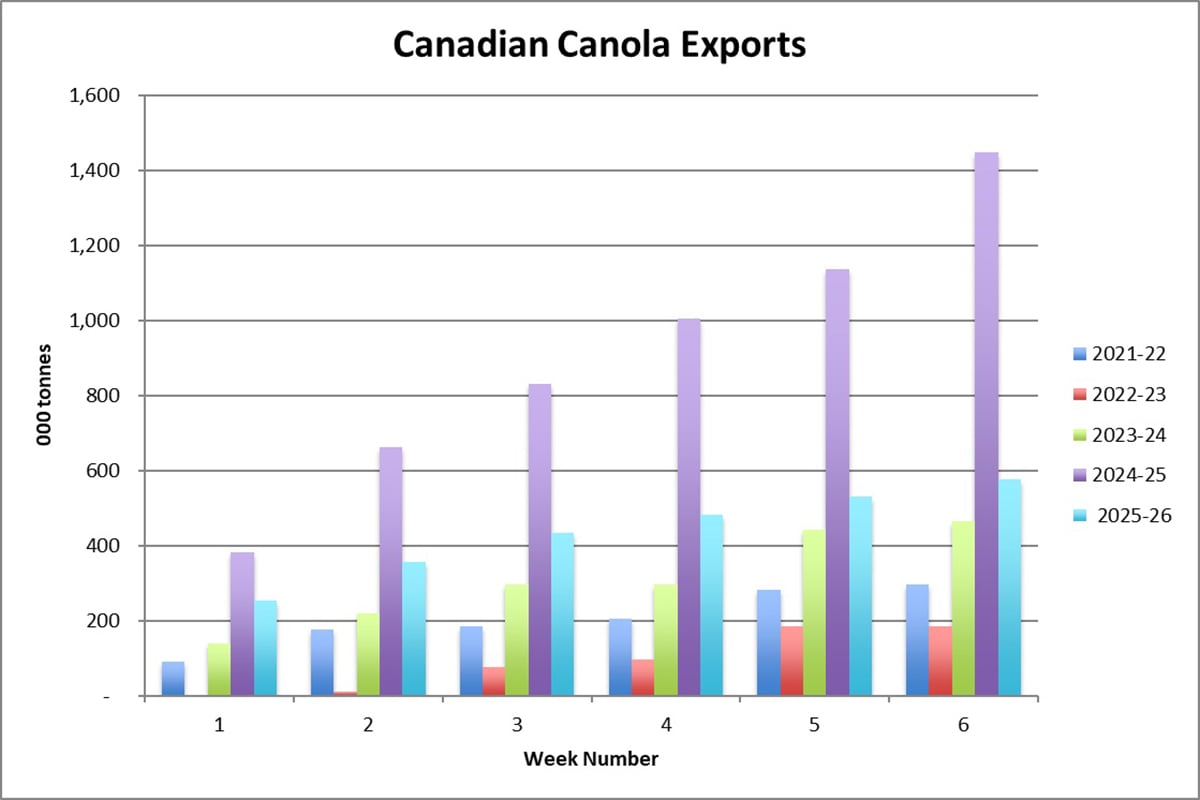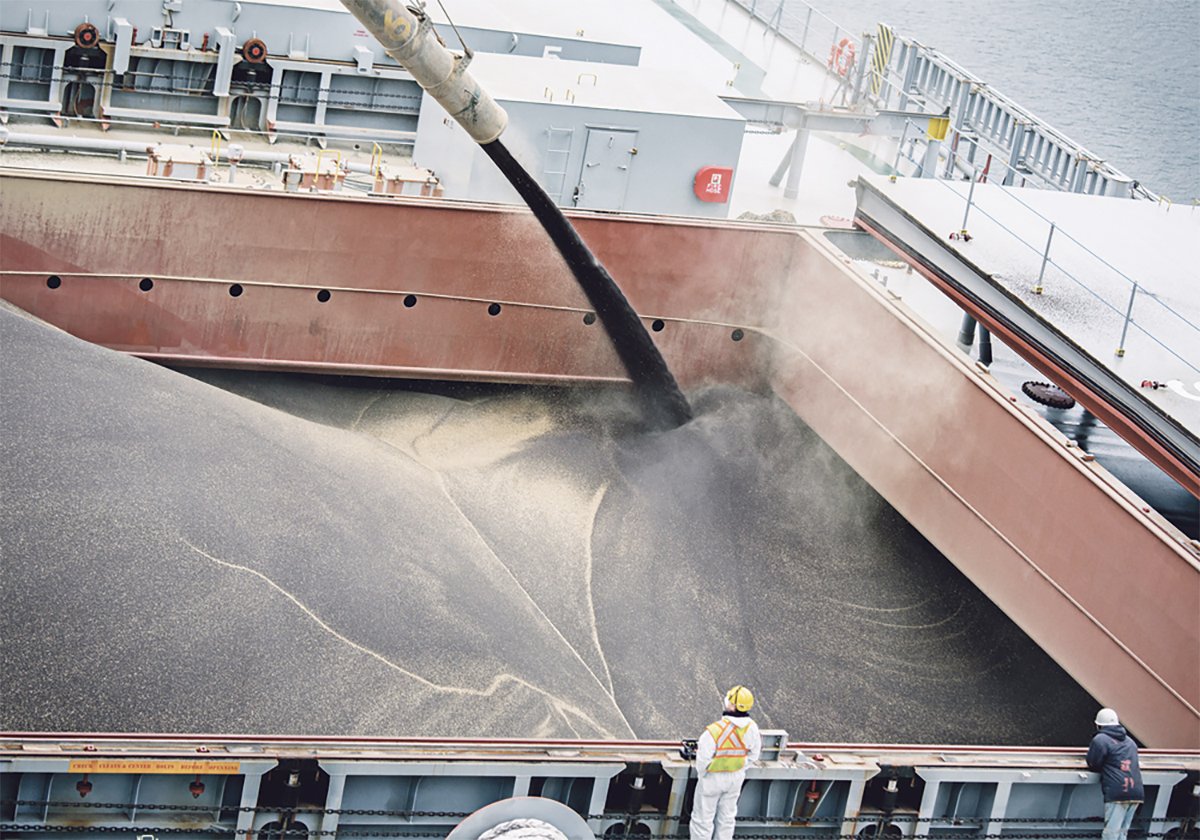There is no doubt that Canadian grain, oilseed and pulse exports are off to a slow start, but there are some bright spots, according to the Canadian Grain Commission’s most recent weekly export data report.
Total inspected exports for the 16 crops are down 1.17 million tonnes from the pace set last year at this time. The main focus has been on the impact of tariffs on exports, but some crops have managed to keep up with last year’s pace.
The largest surprise in the export data is that pea exports are actually ahead of last year’s pace, despite punishing tariffs from China.
Read Also

Canola oil transloading facility opens
DP World just opened its new canola oil transload facility at the Port of Vancouver. It can ship one million tonnes of the commodity per year.
Exports last week were very strong at 183,600 tonnes, which brought the crop year-to-date total to 396,300 tonnes. This is up 11,100 tonnes from last year during week six of the crop year.
All of the exports were shipped from Vancouver terminals, which means that peas have initially found markets to help replace the loss of the China market. This will be an interesting trend to follow in the coming months.
There has been a significant drop in Canadian canola exports this year to date.
Exports of canola last week were a scant 45,500 tonnes, which brought the total exports this crop year to date to 575,000 tonnes. This is 872,200 tonnes behind last year’s pace.
It is not really time to panic because the cumulative exports are still larger than the exports during the 2021-23 crop years.
The canola export pace needs to pick up in the coming weeks to meet the current export expectations. The Canadian canola crop is expected to increase to 20 million tonnes this year, but exports are expected to drop close to seven million tonnes.
Wheat exports have been strong despite a small drop in shipments so far this crop year, with the week ending Sept. 14 reaching 385,500 tonnes. This pushed the crop year-to-date total to 1.86 million tonnes, which is just 90,200 tonnes below the pace set last year.

The wheat exports last week were almost evenly divided between west and east coast ports. Vancouver ports shipped 206,800 tonnes, while St Lawrence ports accounted for 100,000 tonnes.
Thunder Bay shipped 43,800 tonnes during the week. Shipments to the U.S. and/or Mexico were 14,000 tonnes during the week.
Deliveries into the primary system were also strong at 915,500 tonnes.
There is no question that wheat exports are leading the way for Canadian crops this year, despite a small drop from last year. Export demand remains strong for wheat but the question is, when will prices begin to improve?

















